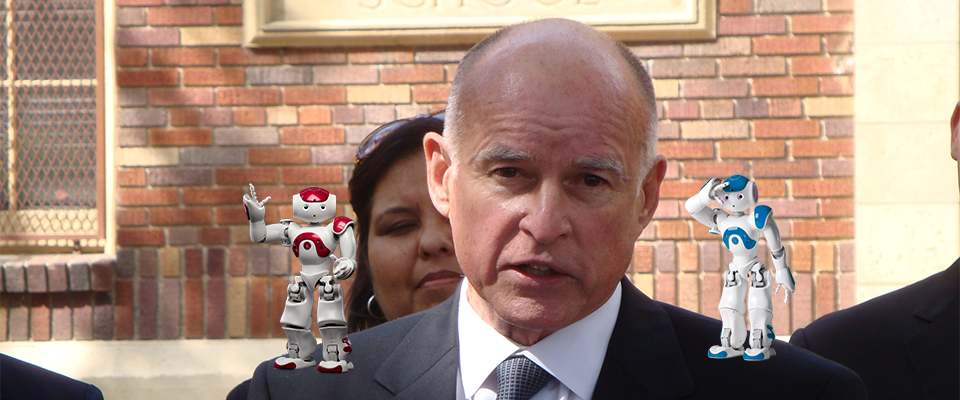Antibiotics were once a doctor’s best weapon against infections, but now some 2 million people a year become infected with bacteria that are resistant to them. On Tuesday, a panel of experts hosted by the UC Berkeley Graduate School of Journalism largely blamed the crisis—23,000 people die a year from infections that can’t be cured, according to the Centers for Disease Control and Prevention—on the livestock industry for overusing these life-saving drugs.
Since the 1950s, ranchers and farmers have been feeding their cattle, pigs, goats, sheep and poultry antibiotics to make them grow fatter, faster—with the unintended side-effect, critics note, of increasing human resistance to such medicine.
“I’ve been surprised that this has been allowed to persist,” said panelist Michael Pollan, a UC Berkeley journalism professor and food activist. “It’s a public health threat.”
And that’ s not all. Panelist Dr. Lee Riley, a UC Berkeley professor of infectious diseases who has studied the issue, said he believes that antibiotic use in food animals could be contributing to the country’s obesity epidemic: Scientists testing the hypothesis on mice, for example, are finding that mice ingesting antibiotics gain far more than those eating a high-calorie diet. Riley noted that since livestock pass antibiotics through their excrement to the ground and water, they are in almost everything we eat.
“If it’s a growth promoter in livestock, what do you think it is in humans?” he asked.
But for now, the concern is more focused on resistance. In 2011 (the most recent year for which numbers are available), nearly 30 million pounds of antibiotics were sold for meat and poultry production in this country, compared to 7.7 million pounds sold to treat sick people, said panelist Maryn McKenna, a science journalist at work on a book chronicling the history of antibiotic use in livestock production.
For a long time—even before the 1969 Swann Report, which recommended that antibiotics for humans not be used as growth promoters—scientists warned that overuse of antimicrobials was making the drugs less effective on humans.
Some countries, such as Holland, have banned the use of antibiotics as growth promoters. And in December 2013, the United States Food and Drug Administration began a three-year program asking antibiotic manufacturers to voluntarily remove all growth promotion indications from their labels, which would make it illegal to use the drugs for that purpose without veterinarian oversight. All 26 pharmaceutical companies involved in manufacturing products for animals agreed to phase out the use of antibiotics for growth promotion in livestock. Farmers and ranchers have always been able to buy the drugs, or feed with antibiotics already in it, over the counter.
The livestock industry has said that it’s not opposed to reducing its use of human antibiotics, but wants the option to continue to use antimicrobials as a prophylactic. (It’s common practice for large livestock producers to put antibiotics in feed and water as a preventative measure against disease.) Some producers say their stock would die without it.
“The goal of giving veterinarians greater oversight of antibiotic use in food animals is commendable, but cattlemen are concerned with the feasibility of implementing the veterinary feed directives given practical hurdles, including a current shortage of veterinarians in many rural areas throughout the country and the increased record-keeping burden it could have on the day-to-day requirements veterinarians currently face,” the National Cattleman’s Beef Association said in a statement after the FDA first started discussing the problems in 2012.
Under the FDA plan, as long as farmers or ranchers have authorization from a vet, they could continue the practice. That makes Pollan and McKenna wonder how effective the program really will be in reducing the use of non-therapeutic antibiotics. “The test will come down soon enough,” Pollan said, “All we have to do is look at the (FDA’s use) numbers when they are available to see if there has been a decrease.”
Holland actually saw an increase after its ban because farmers used the prophylactic reason as a loophole, McKenna said. American politicians have repeatedly tried to pass strict legislation both federally and statewide that would ban any kind of use other than to treat a sick animal, but to no avail.
“Big ag and big pharm are powerful industries,” Pollan said.
Riley added that as long as there are industrial farms where animals are kept in crowded conditions, antibiotics will be needed to combat deadly livestock diseases. “We can’t escape this,” he said. “What needs to be changed is animal husbandry.”
Researchers are trying to develop new human antibiotics to outrun the spread of antibiotic resistance, but it’s a herculean task. That’s why the stewardship of prescribing antibiotics has to be improved—not just in livestock use, but human use, said Dr. Piero Garzaro, regional infectious diseases chair for the Permanente Medical Group—Northern California. According to the U.S. Centers for Disease Control, 50 percent of all antibiotics prescribed to humans are not needed or are not effective as prescribed.
Garzaro ticked off once-easy-to-treat bacteria that have become almost impervious to antibiotics. For example: Carbapenem-resistant Enterobacteriaceae (CRE) germs found in the intestines that can cause urinary tract infections, bloodstream infections, wound infections, and pneumonia. Today CRE is resistant to almost every antibiotic available, Garzaro said.
Think about what the world would look like without antibiotics: Before the discovery of penicillin in 1928, people regularly died of minor wounds and strep throat.
“We’re getting very close to having nothing that will cure gonorrhea,” he said, adding that there are 246,000 resistant cases a year in the United States.
There are 80,461 methicillin-resistant Staphylococcus aureus (MRSA) cases a year and 11,285 deaths, he said. MRSA is a cluster of bacteria that can cause infections in the skin and lungs, and is known as a superbug.
The specter of superbugs certainly gives pause to panel moderator Dr. John Swartzberg, a Berkeley professor of infectious diseases and editorial director of the Berkeley Wellness Letter and BerkeleyWellness.com. “Think about what the world would look like without antibiotics,” he challenged the audience—a disturbing thing to consider given that, before the discovery of penicillin in 1928, people regularly died of minor wounds and strep throat.
The panel, part of a series sponsored by Kaiser Permanente’s Institute for Health Policy, was co-sponsored by Berkeley Wellness, the California Wellness Foundation, Berkeley Food Institute, UC Berkeley Center for Emerging and Neglected Diseases, and the Berkeley chapter of CalPIRG.



















